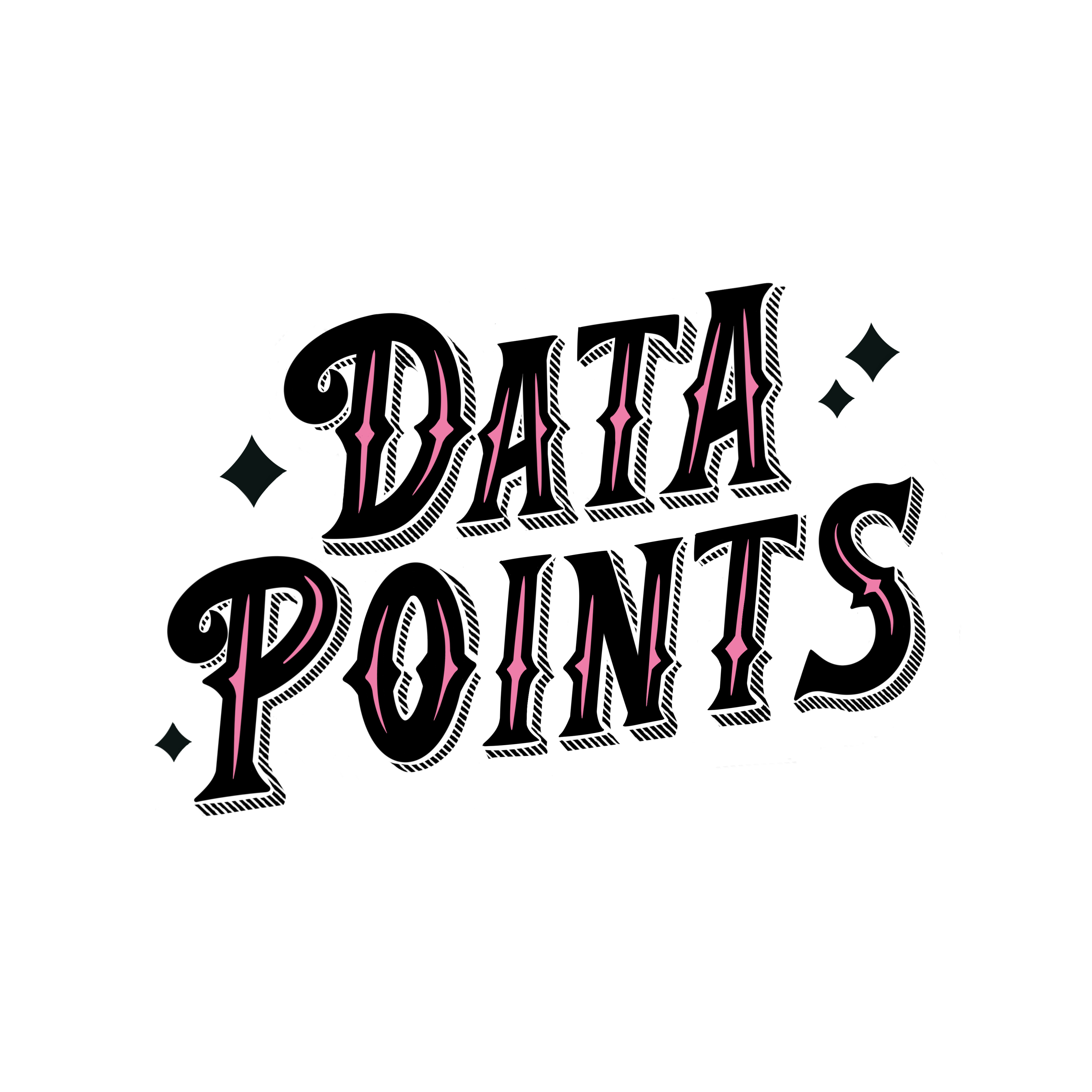Wondery Plus subscribers can listen to Something Was Wrong early and ad-free right now.Join Wondery Plus in the Wondery app or on Apple Podcasts.
Hi friends, it's Dr. Corey Emmanuel, media psychologist, mental health advocate, and founder of Men Talking Shift.The Broken Cycle Media Team is excited to offer a new series of educational episodes, which we're calling Data Points.
These special episodes will include educational information, statistics, and support on different topics that are important to our community.Thank you for listening.
While social media can offer many benefits to today's youth, including identity and self-expression, educational opportunities, and maintaining relationships with friends and family, there is substantial evidence indicating that it also poses significant risk to their mental health and well-being.
Currently, the safety of social media for children and adolescents is not conclusively determined due to insufficient evidence.
Recognizing the increasing research on potential harms, it is crucial to enhance our understanding of the associated risks and urgently take measures to create safe and healthy digital environments.
Taking this holistic approach is essential to protect the mental health and well-being of children and adolescents during their critical developmental stages.
A primary concern for parents and guardians regarding preteens is the time spent on digital devices and ensuring their social media experiences are safe.
While most experts agree that introducing a tablet for educational purposes around ages 2 or 3 is generally appropriate, it's important to acknowledge that early adoption may lead to premature negative consequences.
According to the Park Precise Advertiser Report, YouTube is more popular than TikTok among kids under 12 in the U.S. However, Forrester reports that TikTok is the most used social media app among kids aged 12 to 17, with 63% using the app weekly.
In both cases, parents and guardians who want their children to learn using mobile devices must acknowledge and prepare for the realities of unsupervised encounters on these and other popular apps.
Similar to adults, youth are vulnerable to cyberbullying and online predators.According to KidsHealth.org, children who experience cyberbullying may have difficulty focusing in school, which can impact their academic performance.
Severe, persistent, or frequent cyberbullying can lead to anxiety, depression, and other stress-related conditions in both victims and perpetrators. In rare instances, some children have attempted or completed suicide as a result.
A recent survey by Snap Inc., the owners of the popular app Snapchat, revealed that two-thirds of Gen Z have been targeted for online sextortion, when a perpetrator threatens to expose sexually compromising information unless the victim meets certain demands.
The research highlights that 29% of victims were approached on social media platforms, and 47% of them faced threats to share their intimate images unless demands were met.
Educating kids about online safety, like not sharing personal information and recognizing signs of cyberbullying, along with using monitoring software, can help protect them.
Key signs of cyberbullying include unusual emotional reactions, declining school performance, hiding devices, and reluctance to discuss their online experiences.
Another significant mental health concern for parents, guardians, and educators is the impact of social media on adolescent sleep patterns.
As social media becomes a central part of daily life, many adolescents find themselves using screens, especially for social media, late into the night.
According to Yale Medicine, on a typical weekday, nearly one in three adolescents report staying up until midnight or later because of their screen use.
Adolescents who stay up late using social media may struggle with attention in class, experience decreased problem-solving abilities, and exhibit lower academic performance overall.
This can result in missed assignments, lower grades, and increased stress, further compounding the academic challenges they face.
Furthermore, children with low academic performance frequently encounter various stigmas that can profoundly affect their mental health.
These stigmas often lead to social exclusion, increased stress and anxiety, which can further impede their academic progress.
Other adolescent mental health issues often stem from how social media triggers feelings of low self-esteem and fosters unhealthy comparisons.
Research demonstrates that increased opportunities for social comparison on social media platforms are linked to greater body image dissatisfaction and heightened drive to be thin among adolescents.
For instance, comparing oneself to celebrities can lead to body image dissatisfaction, and engagement with celebrities, such as following their activities, can contribute to body image dissatisfaction in youth.
Adolescents, like adults, often experience fear of missing out, or FOMO, the anxiety or insecurity about missing an event or opportunity.
Without a strong sense of self, young people may be particularly vulnerable to FOMO, as they are still in the process of defining their values and building their self-worth.
The potential dangers of being exposed to harmful content are a significant mental health concern for today's youth.
Extreme, inappropriate, and harmful material remains easily accessible to children and adolescents through direct pushes, unwanted exchanges, and algorithmic designs.
Self-harm-related content and risk-taking challenges are pervasive on social media platforms, posing significant risks, especially for those already facing mental health issues.
According to the Office of the Surgeon General, live depictions of self-harm can normalize these behaviors, leading to dangerous outcomes like seizures and severe bleeding.
Parents and guardians of teenagers are increasingly concerned about the rising tide of violence and sadness, questioning the role of social media.
The Youth Endowment Fund found that 4 in 10 teenagers view social media as a major factor driving violence, nearly as many as those who blame gangs or drugs.
Teens more involved in violence are even more convinced that social media is a contributing cause. Equally concerning is the diminishing enthusiasm for life among teens, possibly due to excessive social media use.
According to the Centers for Disease Control and Prevention, suicide is the second leading cause of death amongst youth ages 14 to 18 after unintentional injuries.
Frequent exposure to violent content can desensitize teens to violence, heightening feelings of fear and insecurity, fostering sadness and hopelessness.
When social media amplifies negative behaviors, it can overshadow positive role models and healthy behaviors, leaving teens feeling directionless and unsupported.
It is also worth noting that social media can offer adolescents many benefits, which include social engagement, like keeping in touch with existing friends and classmates, as well as discovering new connections and networks of mutually shared interests.
It also provides opportunities for creativity and self-expression, civic and community engagement, and expanded access to information and services, including online therapy.
But overall, the pervasive influence of social media on both preteens and teens underscores the need for parental awareness and intervention to mitigate the negative impacts.
I strongly recommend families and preteens and teens have a digital media family plan.
A plan should include establishing clear guidelines, such as setting screen time limits, establishing content boundaries, designating tech-free zones and times, device-free meals, bedtime rules, and common areas.
Parents should prioritize modeling healthy digital habits, actively participating in the family plan, encouraging open communication, creating safety, and monitoring and adjusting as needed.
By implementing this digital media family plan, parents and guardians can help ensure a balanced approach to media consumption, fostering healthier online and offline lives for everyone in the family.
If you suspect your child or teen is facing mental health challenges related to social media use, it's important to consult a licensed mental health professional for support.
Reach out to a mental health expert to discuss your concerns and explore appropriate interventions.For assistance in finding a qualified professional, you can contact the National Alliance on Mental Illness at 1-800-950-6264.
or visit their website at www.nami.org.And don't forget for a list of nonprofit organizations and resources, please visit somethingwaswrong.com forward slash resources.
I'm Dr. Corey Emanuel, and you can follow me across social media at Corey Emanuel, or visit my website at www.coreyemanuel.com.Thank you so much for listening and learning with us.
If you like Something Was Wrong, you can listen early and ad-free right now by joining Wondery Plus in the Wondery app or on Apple Podcasts.Prime members can listen ad-free on Amazon Music.
Before you go, tell us about yourself by filling out a short survey at wondery.com slash survey.











